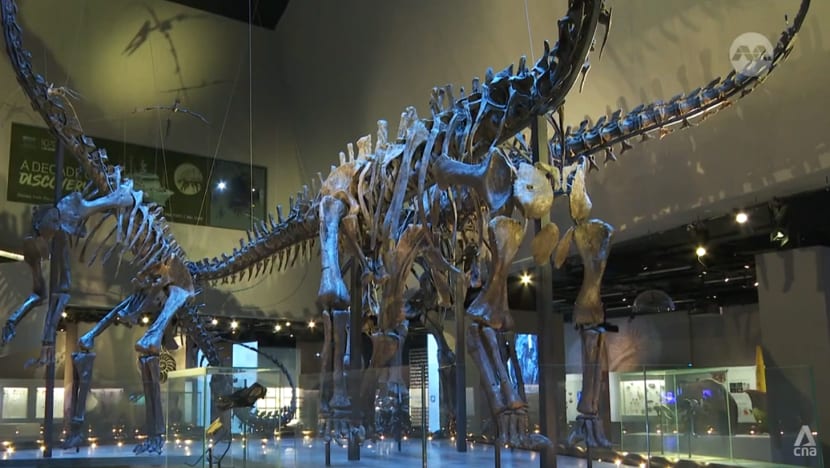SINGAPORE: The Lee Kong Chian Natural History Museum (LKCNHM) may soon need to expand amid a growing collection and rising visitor numbers.
However, there are no plans to move from the current location within the National University of Singapore, said Associate Professor Darren Yeo, who heads the museum.
Instead, the museum intends to enlarge its existing space and adjoining property, he noted.
“Now it’s about trying to find the funding to build up the connecting building we have here, once we have more space… that will allow us to expand our temporary exhibitions and allow our gallery to be a bit more dynamic,” added Assoc Prof Yeo.
“If we were able to expand, (we would be able) to have more or bigger exhibition halls.”
He said more space can be allocated for the museum’s growing amount of research and collection from surveys and expeditions conducted with local and regional partners.
The biodiversity museum, which turns 10 this year, houses more than a million natural history specimens, including birds, insects and reptiles.
It has welcomed more than 650,000 visitors since it was established in 2015. Visitor numbers also hit a record high of over 88,000 last year, a sign of growing public appeal for its exhibits.
Assoc Prof Yeo believes the greater exposure of natural history among the public has led to more people visiting the museum.
BIRTHDAY CELEBRATIONS
The only museum dedicated to natural history in Singapore on Tuesday (May 6) marked its 10th anniversary with two exhibitions and a new book.
The book and exhibition were launched by President Tharman Shanmugaratnam and his wife, Ms Jane Ittogi.
The book, titled Archipelago Of Islands: Natural And Other Histories Of Singapore, pays tribute to Scottish naturalist William Jack, who described Singapore as an “Archipelago of Islands” during his visit in 1819.
Jeslynn Teo, one of the book’s authors, hopes the publication will offer a fresh perspective on Singapore’s history.
“Usually, people would think of Singapore as a single mainland city rather than an archipelago. (We are in fact) an archipelago of… 54 islands,” said Teo, an executive at the museum’s Biodiversity Histories unit.
She added that Singapore consisted of up to 79 islands in the past, but changes over the centuries have resulted in a loss and gain of biodiversity, leading to a total of 54 islands today.
The museum is also holding an exhibition, A Decade of Discovery, which will run for a year until May 2026.
It showcases the LKCNHM’s origins, and its current role in protecting and displaying the natural heritage of Singapore and Southeast Asia.
Ms Esther Parn, a gallery and exhibitions manager at LKCNHM, said the museum will also showcase interesting specimens and findings from expeditions conducted over the years as part of the anniversary celebrations.
“We (will) also talk about the RIMBA expedition to Sarawak, so there are some specimens from there as well,” she said, referring to a collaboration between the LKCNHM and the Sarawak Forestry Corporation to document the rich biodiversity of Sarawak and improve wildlife conservation management, among other things.
Apart from in-house celebrations to mark 10 years of operations, the LKCNHM has also announced an exhibition to be held in conjunction with Science Centre Singapore.

The museum added that this year-end showcase will look at extinctions and dinosaurs over 400 million years of Earth’s history.
BRINGING SPECIMENS HOME, DIGITALLY
The LKCNHM is also expanding its digital…








